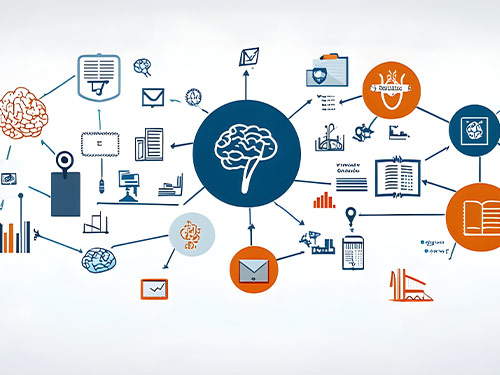A contact center agent’s workday can be a fraught experience… highly demanding, stressful, emotionally draining. Burnout can take its toll, and good agents aren’t likely to tolerate the unpleasantness. The job market is open, and they’ll take their skills elsewhere. Agents left behind, as well as supervisors trying to balance schedules and optimize workloads, suffer the consequences.
This certainly isn’t a new situation. Customer experience (CX) leaders have long been challenged by high agent attrition and turnover and the rates are on the rise. After a dip in 2022 to 21.8%, Metrigy’s AI for Business Success: 2024-25 research study of nearly 700 companies shows agent attrition/turnover climbed to 28.1% in 2023 and is projected to reach 31.2% by the end of this year. High attrition can be problematic for a variety of reasons, including increased workloads and greater stress on agents and supervisors and low satisfaction ratings from customers that feel the trickle-down effect of longer-than-desired wait times, among other issues.
Workforce optimization/workforce engagement management (WFO/WEM) suites offer a solution to the workforce challenge, in that they comprise the applications, data, and analytics for enabling continuous efficiency improvements of contact center staff and operations. Used effectively, WFO/WEM tools can also lead to better agent performance, optimized scheduling, and a boost in job satisfaction, among other benefits—especially when powered by artificial intelligence (AI).
Yet, many CX leaders have yet to tap into the potential of a WFO/WEM suite; Metrigy’s latest adoption data, from our global Customer Experience MetriCast 2024 buyer-side market forecast study of 1,566 companies, shows that only 40% of companies are currently using WFO/WEM. On an application basis, most companies are using or planning to use WFO tools for performance management, quality management, desktop management, and agent analytics, as well as WEM tools such as task management, workforce management (for agent scheduling and capacity planning), employee satisfaction surveys, and recruiting and onboarding.
While the agent experience remains the primary focus for many CX leaders, some are starting to turn needed attention to supervisors, too. When they have the right tools at their disposal, supervisors can do their jobs more effectively and gain more satisfaction from what they’re able to accomplish, thus improving their experience—and, ultimately, the agent experience. We expect an increased awareness of WFO/WEM’s value for the supervisor experience is one reason for an expected increase in adoption over the next year and beyond. Of those companies not yet using these tools, Metrigy’s CX MetriCast study shows 46.7% are planning to do so as earlier as this year or are evaluating their options.
As companies explore WFO options, they can look to peer sentiments on critical factors such as AI and analytics capabilities, reliability, and technical features. Metrigy provides a look at customer sentiment using scoring gathered in the CX MetriCast study (based on a 1-to-10 rating scale, where 1 = Extremely Poor and 10 = Outstanding). For WFO, overall average customer sentiment score is 8.00, with individual provider scores ranging from 7.55 to 8.37.
Measuring success should be a goal—and the potential for driving improvements is noteworthy, as Metrigy has seen in its research. Looking at the successful customers of the dozen WFO vendors we assessed as part of our CX MetriStar Award program, Metrigy found:
- 58.2% saw an improvement in agent performance because of WFO’s impact
- All (24.4%) or most (60.9%) companies found agents performed at maximum capacity with WFO in use
- Supervisor productivity improved by a minimum of 41%.
- Customer satisfaction score is at or greater than 5.4, out of 7





